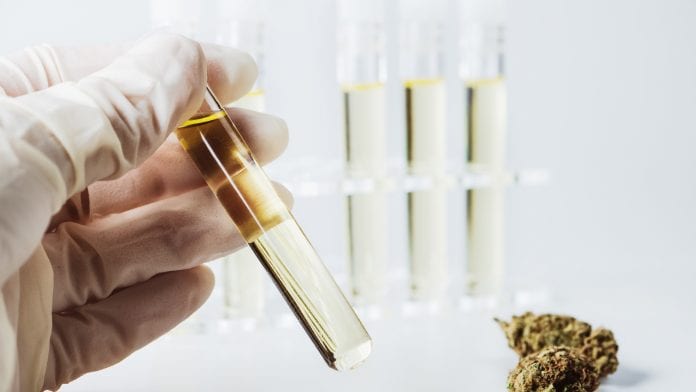
The Association for the Cannabinoid Industry (The ACI) has today announced high-level discussions with the Laboratory of Government Chemists (LGC) that will focus on the development of a cannabinoid testing methodology.
The ACI will be working in conjunction with LGC to create a cannabinoid testing methodology with a higher precision control, an essential step towards standardisation for the industry.
This announcement comes after months of work with the analytical testing laboratory Eurofins, which rigorously scrutinised the ACI produced protocols and demonstrated them to be robust.
CBD product testing
Currently, a standard analytical testing methodology for CBD product testing does not exist. This means test results can differ from laboratory to laboratory. This situation was highlighted last year when the Centre for Medicinal Cannabis performed a blind testing exercise of 30 popular CBD products in the UK. The study, which recently was published in a peer reviewed academic paper, highlighted discrepancies between what was stated on the label and the results in the majority of the products tested.
It was concluded these discrepancies could be attributed to several factors; different sample preparation protocols employed for analytical testing; different validation standards of analytical methodology used in testing; or companies unwittingly (or purposely) presenting erroneous information to sell their products that have been analytically tested (in the absence of any standard protocols) in an unregulated market.
This exposed the need for standardisation and harmonisation of the analytical methodology protocols used in the testing of cannabinoids.
Defining protocols
Dr Parveen Bhatarah, head of The ACI Regulatory and Compliance Unit, led efforts to define protocols for the analytical testing of cannabinoids.
The technology employed will detect levels of cannabinoids to a higher degree of precision (approximately 0.0001%). Laboratories will then be able to identify whether samples contain more than 0.0001% of controlled cannabinoids, equivalent to 1mg/kg. This is known as the Level Of Detection (LOD) and will ensure samples do not exceed the threshold stated by the Misuse of Drugs Regulations (UK Government 2001).
These protocols have already been implemented by best-in-class analytical testing laboratory Eurofins, who showed that the protocols demonstrate quantifiable levels of cannabinoids beyond 0.0025% (weight by weight). This is known as the Level Of Quantification (LOQ). This analytical methodology also showed the ability to quantify over 16 known cannabinoids.
Dr Bhatarah said: “A lack of harmonisation in testing for cannabinoids led to important questions regarding product labelling and the analytical methodology used to declare the percentage of CBD and controlled cannabinoids on CBD products. Up to now there has been no standard analytical methodology for CBD product testing.
“Test result variations are further complicated due to the instability of most of these cannabinoids to light, temperature, humidity, and air meaning sample preparation is key to consistency. Eurofins have demonstrated our protocols to be robust and we look forward to moving this standardisation forward with LGC.”
The ACI is now in further discussion with the Laboratory Of Government Chemist (LGC) regarding the provision of samples for a project that will focus on the development of a method for testing CBD in foods with a higher precision control. LGC is seen as the gold standard within the analytical testing industry and often advises governments throughout the world.
Dr Thierry Le Goff, Head of Products and Services, National Measurement Laboratory, LGC, said: “The ACI is in discussion with the Government Chemist regarding the provision of samples for a GC project that will focus on the development of a method for CBD in foods.”







